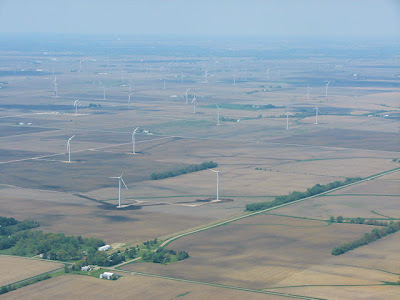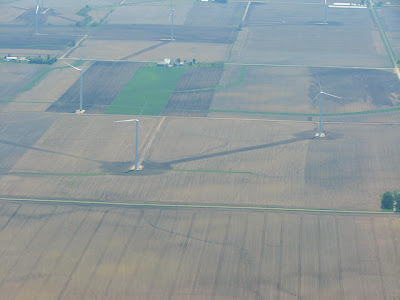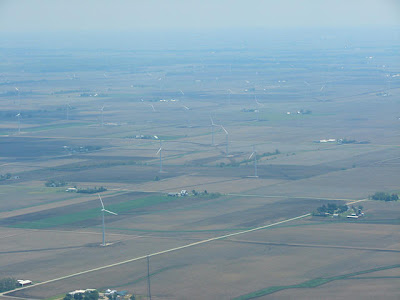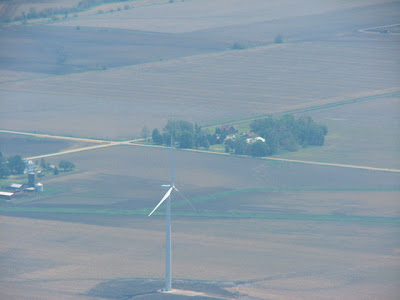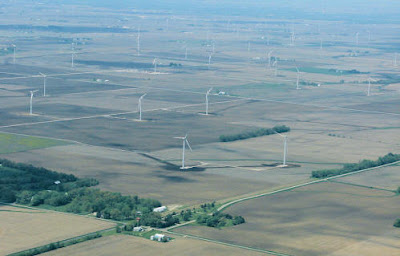The reason this Post is so late in the day is because I opened my web browser today and it showed that I had 35 messages waiting for me. Someone had unleashed a worm on my address book and it was busy sending all my friends spam. Some of it dangerous spam. I was mortified. I spent over 2 hours checking to make sure it was originating on my computer. People sent some of it back to me so I could see what the heck was spewing out of my account. Then in consultation with my computer expert Afredo I determined that just changing my email password could halt the attack…So I did and it ended. I had to blow off lunch with David Lasley, Dave Fuchs and the Sangamon County Democrats just to get to here…Damnit.
There were some things that I saw at the Illinois State Fair that I did not really care for. One of those things was the prominence of Biofuel in both of Governor Pat Quinn’s tents. We all know that biofuel, especially ones made from foods, distract people from getting rid of the internal combustion engine. It also drives up food prices so this:
and this:
were NOT appreciated.
Though the latest craze in biofuels is watermellons that are farm waste:
http://dsc.discovery.com/news/2009/08/26/watermelon-fuel.html
Watermelon Juice: The New Fuel?
Michael Reilly, Discovery News
Fill ‘er Up | Discovery News Video
Aug. 26, 2009 — A staple of backyard barbecues and summer time snacks, watermelon is also a promising new source of renewable energy.
According to a new study, leftover watermelons from farms’ harvests could be converted into up to 9.4 million liters (2.5 million gallons) of clean, renewable ethanol fuel every year destined for your car, truck, or airplane’s gas tank.
Agriculturally, watermelon is a peculiar fruit — each year farmers across the country leave between 20 and 40 percent of their crop to rot on the ground. These are the ugly ducklings of the lot; though perfectly fine on the inside, the misshapen or blemished melons simply won’t sell at the grocery store.
“If a crow lands on a melon, takes two pecks at the rind, and then flies away, it’s no good,” Wayne Fish of the United States Department of Agriculture in Lane, Oklahoma said. “I had farmers telling me, ‘I’m leaving one-fifth of my melons on the land. Is there anything I can do with them?'”
Across the United States, he estimated that 360,000 tons of watermelons spoil in fields every year.
Some local growers wondered whether the waste melons could be turned into ethanol, the clean-burning fuel derived from plant sugars. In a series of new experiments published yesterday in the journal Biotechnology for Biofuels, Fish and a team of researchers showed that they can.
What’s more, watermelon juice may turn out to be the perfect way to optimize industrial-scale production of ethanol from corn, molasses and sugar cane.
:}
Then there was this. What the hell. This causes Earth Quakes in Texas yet it makes it to the State Fair?
Fracking is Coming to Decatur. People better get ready for it:
http://www.foxnews.com/story/0,2933,526233,00.html
Drilling Eyed as Possible Culprit Behind Texas Earthquakes
Sunday, June 14, 2009 
CLEBURNE, Texas — The earth moved here on June 2. It was the first recorded earthquake in this Texas town’s 140-year history — but not the last.
There have been four small earthquakes since, none with a magnitude greater than 2.8. The most recent ones came Tuesday night, just as the City Council was meeting in an emergency session to discuss what to do about the ground moving.
The council’s solution was to hire a geology consultant to try to answer the question on everyone’s mind: Is natural gas drilling — which began in earnest here in 2001 and has brought great prosperity to Cleburne and other towns across North Texas — causing the quakes?
“I think John Q. Public thinks there is a correlation with drilling,” Mayor Ted Reynolds said. “We haven’t had a quake in recorded history, and all the sudden you drill and there are earthquakes.”
At issue is a drilling practice called “fracking,” in which water is injected into the ground at high pressure to fracture the layers of shale and release natural gas trapped in the rock.
There is no consensus among scientists about whether the practice is contributing to the quakes. But such seismic activity was once rare in Texas and seems to be increasing lately, lending support to the theory that drilling is having a destabilizing effect.
On May 16, three small quakes shook Bedford, a suburb of Dallas and Fort Worth. Two small earthquakes hit nearby Grand Prairie and Irving on Oct. 31, and again on Nov. 1.
:}

















